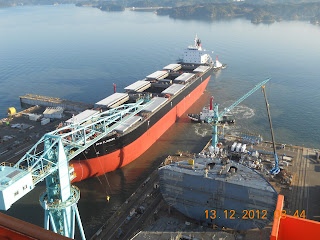Tradewinds (18/12/12) has posted a 'Litmus Test', developed by Shipping Analyst, Sydney Levine, designed to separate the shipping wannabes from the true geek. I got 20 out of 20. Good fun, happy to answer questions via the Blog or you can email the author.
AM
US probes Chinese shipbuilding pricing
-
The US presidential elections this year have a strong anti-China current
with both candidates vowing to get tough with Beijing. Speaking in
Pittsburgh to...
47 minutes ago









